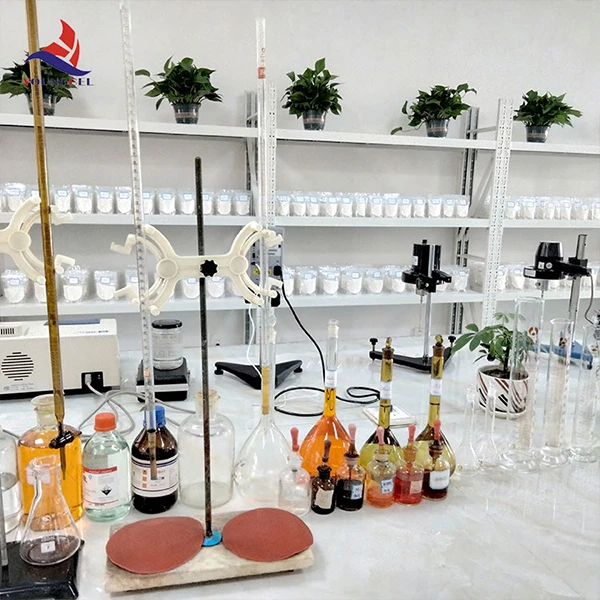Understanding HPMC Grade An Essential Component in Pharmaceutical Formulations
Hydroxypropyl Methylcellulose (HPMC) is a widely used polymer in the pharmaceutical industry, recognized for its versatility and effectiveness as a thickening, binding, and film-forming agent. Its grades play a crucial role in determining the properties and applications of HPMC, influencing everything from tablet formulation to controlled drug release. This article delves into what HPMC grades are, their significance in pharmaceuticals, and how they impact product formulation.
What is HPMC?
HPMC is a semisynthetic derivative of cellulose and is produced through the modification of cellulose with propylene oxide and methyl chloroacetate. This process imparts hydroxypropyl and methyl groups to the cellulose backbone, leading to a compound that is soluble in water and has unique rheological properties. HPMC is non-toxic, biodegradable, and has a low tendency to irritate, making it an ideal choice for pharmaceutical applications.
The Importance of HPMC Grades
HPMC is available in several grades, which vary based on the degree of substitution, viscosity, and molecular weight. The different grades are tailored for specific applications, and understanding these grades is crucial for formulators in the pharmaceutical industry.
1. Degree of Substitution (DS) This refers to the average number of hydroxyl groups on the cellulose molecule that have been replaced by hydroxypropyl and methoxy groups. A higher degree of substitution generally leads to increased solubility and improved gelation properties. Formulators must choose the appropriate DS to achieve the desired characteristics in their formulations.
2. Viscosity HPMC grades are often categorized based on viscosity levels measured in centipoise (cP). Low-viscosity grades are ideal for applications where a smooth texture is needed, while higher-viscosity grades help in thickening solutions and stabilizing emulsions. The choice of viscosity affects drug release profiles, stability, and overall bioavailability.
hpmc grade

3. Molecular Weight The molecular weight of HPMC plays a significant role in determining its performance in various formulations. Higher molecular weight HPMC tends to create stronger gels and provides better controlled release characteristics in oral solid dosage forms. On the other hand, lower molecular weight grades may be preferred for immediate release formulations.
Applications of HPMC Grades in Pharmaceuticals
1. Tablet Formulation HPMC is extensively used in the production of tablets. Depending on the desired release mechanism—immediate or controlled—formulators can select the appropriate HPMC grade. For example, HPMC K15M (a high-viscosity grade) may be used in controlled release matrix systems, while HPMC E5 (a lower viscosity grade) is suitable for immediate release applications.
2. Coating HPMC can also serve as a coating agent for tablets and pellets. Its film-forming abilities allow for the creation of coatings that improve the aesthetic appeal of the product, as well as the stability of active ingredients. The choice of HPMC grade ensures that coatings are effective and suitable for the environment in which the product will be stored and consumed.
3. Suspensions and Emulsions The thickening properties of HPMC make it an excellent choice for suspensions and emulsions, where maintaining the homogeneity of the formulation is crucial. Low viscosity grades can prevent sedimentation in liquid formulations, while higher viscosity grades provide stability to emulsified products.
4. Controlled Release HPMC is especially favored in the development of controlled-release dosage forms, thanks to its ability to form gels. By manipulating the grade of HPMC used, formulators can create a matrix that allows drugs to be released at a predetermined rate, improving therapeutic outcomes.
Conclusion
In conclusion, the grade of Hydroxypropyl Methylcellulose is a vital aspect of pharmaceutical formulation that cannot be overlooked. By choosing the appropriate grade, formulators can optimize the efficacy, stability, and patient compliance of their products. As the pharmaceutical industry continues to innovate, understanding the nuances of HPMC grades will remain essential for creating effective and reliable drug delivery systems. Whether it's through enhancing tablet formulations, improving suspension stability, or enabling controlled release, HPMC is undoubtedly a cornerstone of modern pharmaceutical development.
-
Rdp Powder: Key Considerations for Wholesalers in the Building Materials IndustryNewsJul.08,2025
-
Key Considerations for Wholesalers: Navigating the World of Hpmc - Based ProductsNewsJul.08,2025
-
Hpmc Detergent: Key Considerations for WholesalersNewsJul.08,2025
-
Key Considerations for Wholesalers: China Hpmc For Tile Adhesive, Coating Additives, Concrete Additives, and MoreNewsJul.08,2025
-
Crucial Considerations for Wholesalers: Navigating the World of Construction MaterialsNewsJul.08,2025
-
Key Considerations for Wholesalers Sourcing Additive For Cement, Additive For Concrete, Additive For Putty from Additive Manufacturer Shijiazhuang Gaocheng District Yongfeng Cellulose Co., Ltd.NewsJul.08,2025




